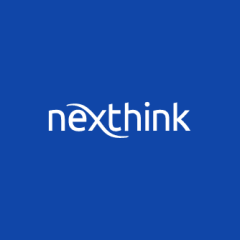We mainly use Nexthink as a help desk tool for individuals, level one support, and responding to whoever complains from his PC.
The search engine functionality that Nexthink has on the finder is terrific, you just search as you would be searching on Google and everything will show up for you.
Nexthink provides you with information and gives you an idea of what exactly is happening. You are able to identify if there is a wrong hard disk coming up plus lots of visibility on the endpoint wether it is a PC or a server.
The view of the agents on the PC side was showing more information than the one on the server side, there are some gaps that the server is not really covering up.
One of the issues we faced on the server side was false-positive findings for example. If I want to schedule a report to show the last time the servers were patched or updated, it was showing or reading the registry that Windows was showing.
Unfortunately, the agent was reading the registries instead of seeing the updates that were installed which caused false reports.
They were having some limitations on the number of alerts that you can generate. This definitely needs to be increased. Previously, it was fifty, if I am not mistaken, or one hundred.
It would be nice to have detection and contain the endpoint. For example, if you have an application that is installed and you do not want the user to use it whenever you double click on it, then it should not open for you and give you a message that this application was blocked.
When it comes to security, Nexthink should be automatically able to detect a bank card number that the user is trying to copy and is trying to do something with it. Let us say, for example, they shared it over an email. This is where Nexthink should capture this moment and send the information to the security department alerting them.
I have been using Nexthink for the past three or four years.
It is stable. We did not face any problem with it during the entire time that I was maintaining it. The only item that you will face, which is a normal issue where an endpoint outside of your domain, and when you connect it to the domain, you will discover that that agent is way too old because you are using an on-premises set-up instead of a cloud set-up.
Nexthink is definitely scalable. I was able to do that with no problem at all.
I needed to contact technical support two or three times and I requested help from the vendor, or actually from the people who implemented the solution in the first place. To be honest, I would rate them a ten because they were so good. The service technicians were polite. They tried to help me, and if they could not assist me, they would follow up with me about the issue.
It was easy. In the beginning, there were people who did the implementation and when we decided to expand the scope to include the servers, I did it by myself, and it was very straightforward. For the server itself, it was two to three days until it was up and running and pitching all the information syncing with the other search engines.
Handling multiple endpoints can be very difficult. I would say if you have a big organization Nexthink will be a big asset for them.
I would rate Nexthink an eight out of ten.



















